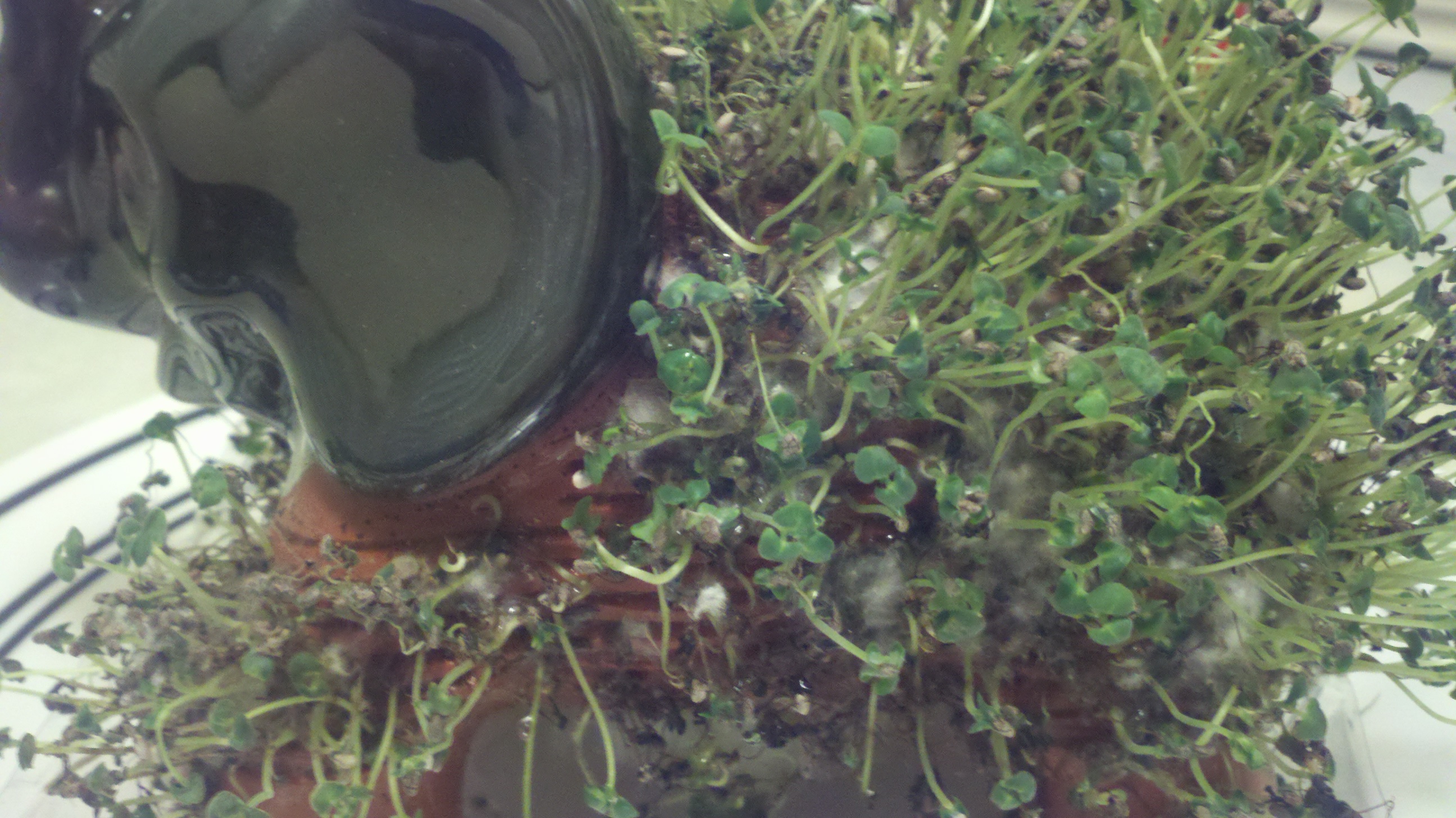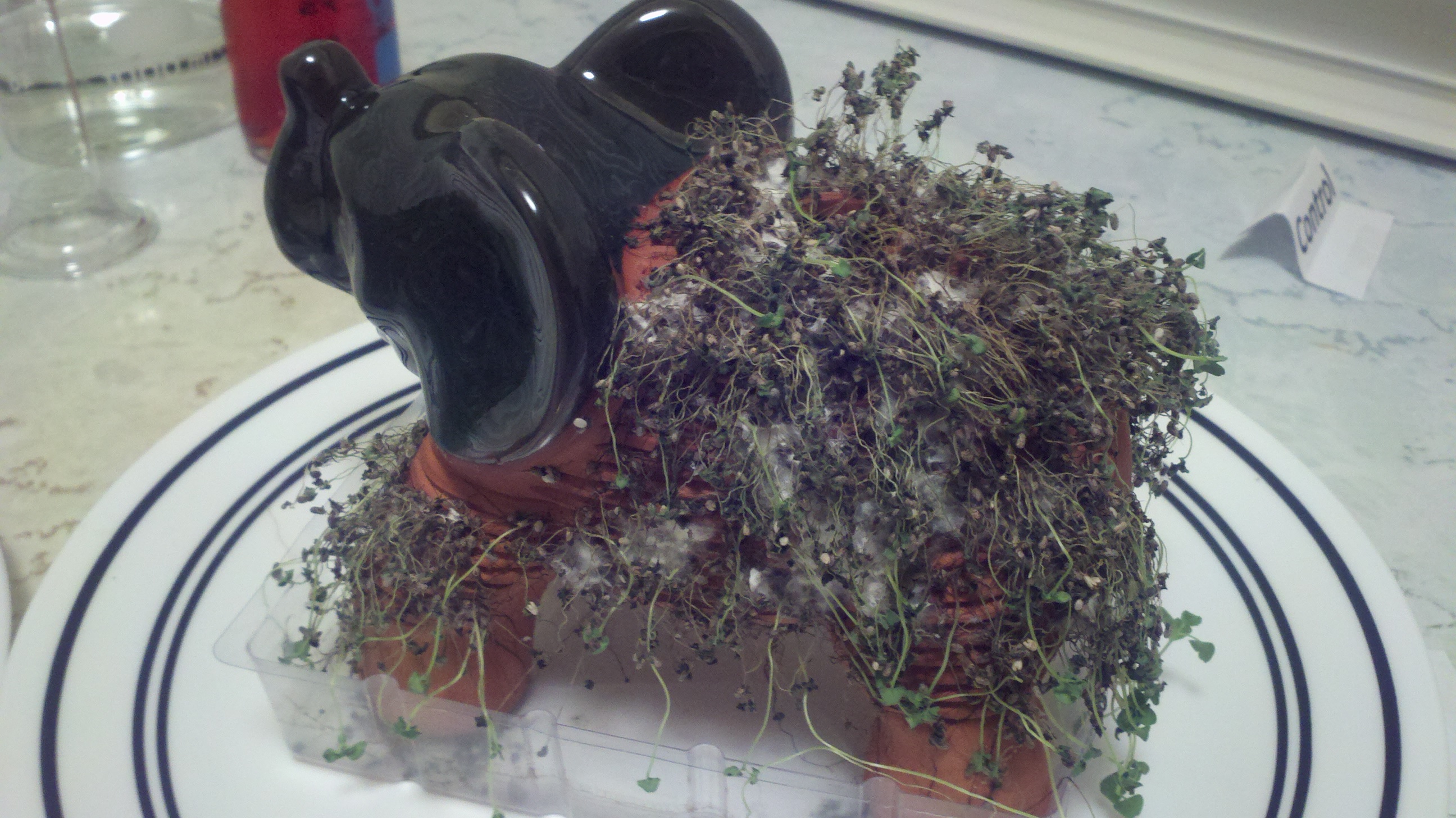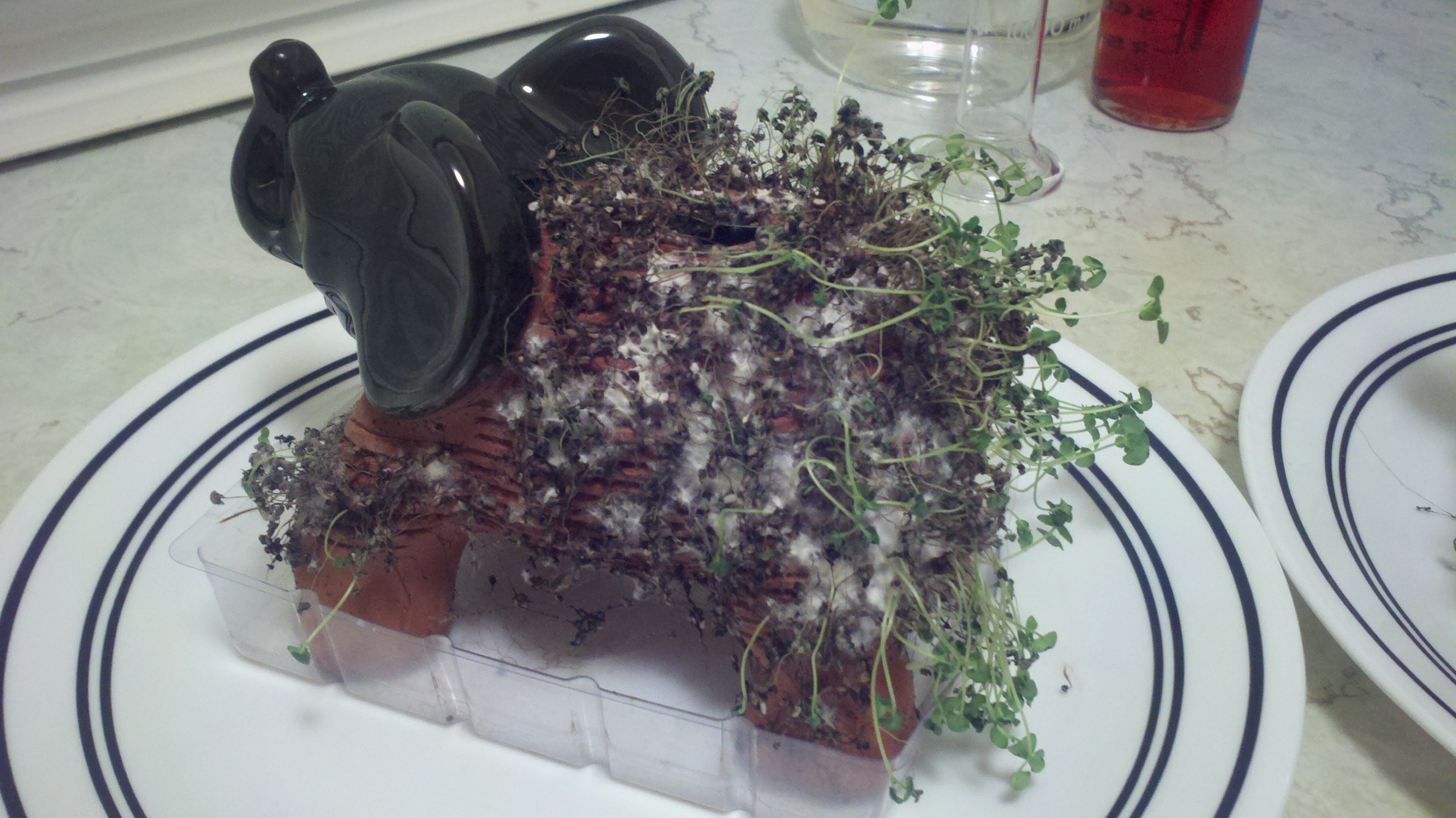A quick write up on a completely non-scientific PQQ experiment. Since pyrroloquinoline quinone is known for its growth factor qualities I wanted to put it to the test while having a little fun in the process. What you will find in the video below is two Chia Pets side by side… one continually saturated with a PQQ solution and the other continually saturated with distilled water. The resulting Chia growth for both the PQQ Chia and the control Chia was about the same during the normal growth cycle for chia seeds. The video takes place over the course of two weeks with a few minor breaks in the action due to software issues.
PQQ experiment findings
The interesting findings came towards the end of the experiment. At the end of both plants’ life cycle, it initially appeared that the PQQ plant was beginning to die faster. The control plant still appeared to be flourishing…

Where as the PQQ plant began to thin a little and white areas began to emerge (which according to Chia.com is secondary root growth)…

However, in the final phase of the plants’ life cycle, the control plant’s sprouts completely failed (but there was a visible lack of secondary growth and mildew)…

On the other hand the PQQ Chia clearly still had healthy sprouts that continued on living long past the control Chia Pet (although there is obviously a healthy amount of mildew as well; at this point, the white areas are clearly not just root hairs)…

Conclusion: I don’t know… time-lapse photography is fun? Seriously though, I don’t think my DIY PQQ experiment is a big leap to identify PQQ as an interesting growth factor. How this translates in humans is still being studied and we will continue to report the latest findings. We really appreciate all your comments and tweets. If you have experimented with pyrroloquinoline quinone at all, please reach out and let us know what you discovered.
